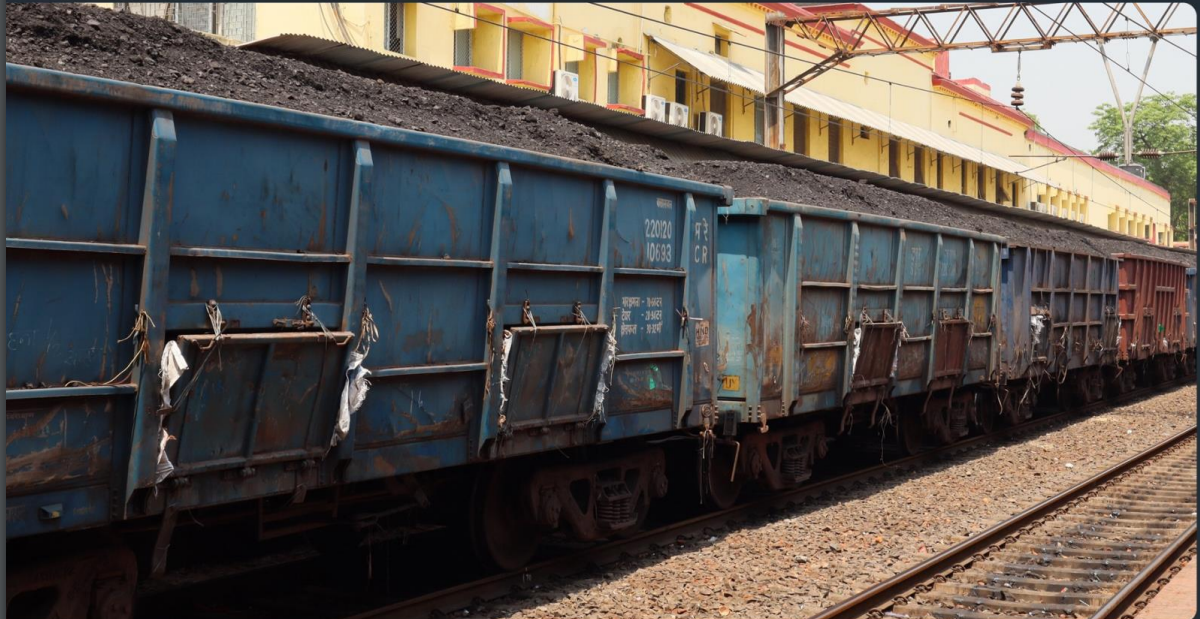A new report by the Institute for Energy Economics and Financial Analysis (IEEFA) finds Indian Railways can better utilize its resources and serve the Indian economy more effectively if policymakers focus on accelerating renewable energy generation rather than expanding coal freight by rail.
The report analyses various forecasts by different agencies of the Indian government and finds that there are plans to increase coal freight transported by rail by at least 400 million tonnes in the next eight years. To meet the target, a range of rail infrastructure projects, including the recently opened Eastern Dedicated Freight Corridor, are imminent or ongoing. The authorities are actively considering more such projects.
“The prioritization of coal freight presents opportunity costs for the Indian Railways and the nation more broadly. A renewed focus by policymakers on generating more electricity from renewable sources and moving it over wires rather than in the form of coal would help the Indian Railways play a more effective role in India’s changing economy,” says the report’s author, Charles Worringham, Guest Contributor, IEEFA.
The report recommends that railway infrastructure planning should be continuously updated to take account of new renewable generation goals and improved electricity demand outlooks to better forecast actual future coal freight requirements.
Further, the report highlights that apart from financial resources, developing coal evacuation infrastructure diverts the Indian Railways’ human and physical resources. The sheer number of projects centred on coal, as well as the Mumbai-Ahmedabad bullet train project, reduces the availability of planning, design, project management, engineering, equipment and materials for basic maintenance and upgrade work on the general network.
This is particularly concerning as network congestion issues are cropping up again for the Indian Railways, according to the report’s analysis of recent data.
“In an expanding and changing economy, transporting raw materials, refrigerated food and finished goods, and enhanced passenger services require network capacity. These services could face significant constraints due to coal freight expansion, which would also worsen the trend of roads increasing their modal share,” says Worringham.
The report recommends prioritizing and incentivizing new renewable energy generation projects in regions where thermal power plants are far from India’s coal regions.
“Long distances have a disproportionately negative effect on railway network congestion and make a far larger call on railway resources,” says Worringham.
The report also highlights stranded asset risk as one of the key concerns of Indian Railways’ investments in coal evacuation projects.
“Most of the coal evacuation infrastructure is coming up in India’s least populated areas. As electricity generation from renewable sources ramps up further and the demand for coal declines in the coming decades, there may not be enough new freight in the coal-bearing regions to justify the Indian Railways’ capital expenditure outlay,” says Worringham.
“To minimize stranded asset risks, all specific potential new railway infrastructure called for in the Integrated Coal Logistics Plan should be re-evaluated, using realistic estimates of project completion timelines and probable project costs, and take account of India’s energy transition progress in coming decades,” he adds.
This content is protected by copyright and may not be reused. If you want to cooperate with us and would like to reuse some of our content, please contact: editors@pv-magazine.com.









By submitting this form you agree to pv magazine using your data for the purposes of publishing your comment.
Your personal data will only be disclosed or otherwise transmitted to third parties for the purposes of spam filtering or if this is necessary for technical maintenance of the website. Any other transfer to third parties will not take place unless this is justified on the basis of applicable data protection regulations or if pv magazine is legally obliged to do so.
You may revoke this consent at any time with effect for the future, in which case your personal data will be deleted immediately. Otherwise, your data will be deleted if pv magazine has processed your request or the purpose of data storage is fulfilled.
Further information on data privacy can be found in our Data Protection Policy.